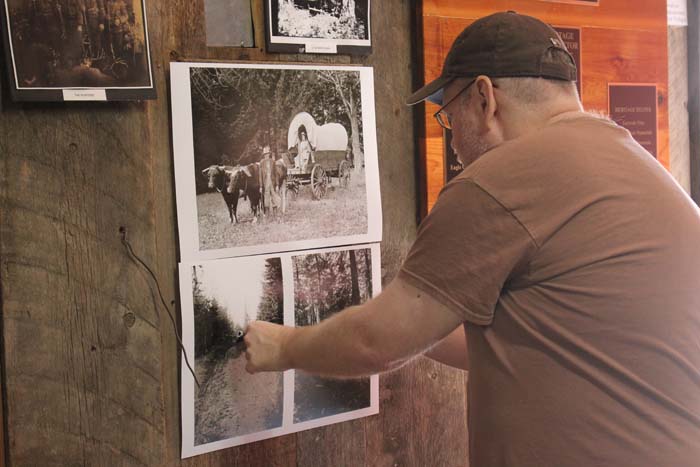Oregon Trail
Published 11:11 am Wednesday, May 9, 2018

- Oregon Trail
UNION — iPhones are decades away from joining typewriters and wooden wagon wheels as museum pieces.
So why is an iPhone displayed at a new Oregon Trail exhibit at the Union County Museum, one whose features include a musket and a China head doll from the 1800s? Because the museum’s staff is creatively using the present to showcase the past.
The iPhone is part of a “Then and Now” Oregon Trail display, which the public will see for the first time Sunday when the Union County Museum — located on Main Street in Union — opens for its almost-six-month 2018 season.
The “Then and Now” display celebrates the 175th anniversary of the Oregon Trail, on which pioneers first started traveling in large numbers in 1843. The exhibit shows what people coming across the Oregon Trail brought with them in the 1800s, and what they would have brought if they had traveled the trail in the early to mid-1900s and today.
Travelers would all need direction. Many received it from guides in the 1800s and would have received it from maps in the 1900s and via GPS units in the early 21st century. This explains why a paper road map and an iPhone with a GPS app are part of the “Then and Now” exhibit, said Carolyn Young, a museum volunteer.
Transportation is also addressed in the “Then and Now’” display. A wagon wheel that came across the Oregon Trail is attached to a wall above three Oregon license plates, the oldest from 1935.
On the comfort spectrum is a wooden chair with its legs cut significantly so that someone could sit in it while riding in a wagon. It is next to a padded combination swivel and rocking chair people might use today.
An item that may pique the curiosity of museum visitors is a passport holder. The passport holder provides fitting symbolism because the United States and Great Britain had competing claims to the Oregon region in the early days of the Oregon Trail. Although Oregon Trail travelers didn’t carry passports, American pioneers were emigrants in a technical sense until 1846, when the Oregon Treaty was agreed to by the United States and Great Britain, making what is now Oregon part of the USA.
The “Then and Now” exhibit includes three irons — a sad iron, an early electrical iron and a steam iron. Sad irons, heated by fire and stoves, were brought out on the Oregon Trail. Electrical irons would have been brought out next followed by modern steam irons.
Heavy cast iron kettles are also displayed, since a number of pioneers transported them in their wagons.
“It shows how strong the oxen were,” Young said.
Another portion of the “Then and Now” display shows what dolls children likely would have taken with them on the long journey along the Oregon Trail. A large China-head doll with a cloth dress represents what some children came to the Northwest with in the 1800s.
“The doll was smuggled in a trunk, (by a little girl who didn’t want to leave it)” said museum volunteer Sharon Hohstadt.
She explained that those traveling the Oregon Trail were discouraged from bringing items like large dolls because they took up too much space.
What the display does not show are the many items pioneers attempted to bring along but had to toss out because of their weight.
“Some people even tried to bring organs,” Young said.
Another new exhibit at the museum provides a look back at World War II, courtesy of the work of the late Fred Hill. At least 30 large prints of the La Grande photographer’s works are displayed. The exhibit is a portrait of Hill’s two years as an Army Air Corps photo reconnaissance officer in the South Pacific during WWII. The new exhibit shows photos Hill snapped in a number of sites including New Guinea, the Philippines and the East Indies. A photo book filled with war-time pictures taken by Hill is also featured.
Hill grew up in Elgin and after serving in the war, moved to California where he worked as a commercial photographer. He studied under the legendary nature photographer Ansel Adams, according to articles published in The Observer. Hill moved to La Grande in 1989 and lived here until he passed away in 2016. Many of his WWII photos were published in his 2007 book “Darkroom Soldier,” and at least 50 others were published in books by other authors.
The display complements another Hill exhibit at the museum, one set up about five years ago. The exhibit consists of at least three dozen old-time cameras and accessories, including a Kodak Brownie camera made between 1894 and 1908.
The Union County Museum annually opens on Mother’s Day. Hohstadt said the anticipation leading up to the opening is always exhilarating for the museum’s staff of volunteers.
“It is very exciting for us,” Hohstadt said.

